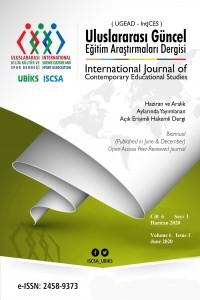Inclusive Sport Possibilities: Educational Study on Paracanoe
Inclusive Sport Possibilities: Educational Study on Paracanoe
Sport is increasingly recognized as an instrument to promote social inclusion values. Some of our motor learning moments, physical, psychomotor and sportive activities, could help people with disabilities as a stimulus to regain the lost or ever developed capacity. People with disabilities can use sport as a tool to have a better control of their body and to improve their own identity through sports competitions, resulting in an increased self-esteem. Several sports have moved to this dimension and one among them is Paracanoe, which is canoeing for athletes with physical impairments. Paracanoe events will also debut at the 2016 Summer Paralympic Games at Rio de Janeiro. This paper aims to investigate the benefit of canoe sports for people with disabilities, with particular attention to the processes to enhance inclusion. A pedagogical qualitative research was conducted through a questionnaire, administrated to the athletes of the National Italian Paracanoe Team and through face-to-face interviews. The study intend to highlight the strong inclusive nature of this sport (where each athlete feels abled-bodied) in addition to physical benefits, in line with the scientific literature
Keywords:
Inclusion, Paracanoe, disability sports special education,
___
- Arrigoni C. (2012). Paralimpici. Lo sport per disabili. Milano: Hoepli.
- Beacon A. (2012). International Diplomacy and the Olympic movement: the new mediators.
- New York: Palgrave Macmillan. Bertini, L. (2005). Attività Sportive Adattate. Perugia: Calzetti Mariucci.
- Blauwet C., MD, Stuart E. Willick, MD. (2012). The Paralympic Movement: Using Sports to
- Promote Health, Disability Rights, and Social Integration for Athletes With Disabilities, The American Academy of Physical Medicine and Rehabilitation, 4-11. Broglia, A. (2012). Strumenti aziendali e leve strategiche per la promozione delle attività sportive a servizio della disabilità, Torino: Giappichelli.
- DePauw, K., Gavron, S. (2005). Disability Sport. Human Kinetics, 2005 de Anna, L. (2009). Processi Formativi e Percorsi di Integrazione nelle Scienze Motorie.
- Ricerca, Teorie e Prassi. Milano: Franco Angeli. Di Nocera, M.(2000). Handicap, sport e qualità della vita. Psicologia della salute, 2.
- Hudson D.A, Crossley H.C, Taunton D.J, Blake, J.I.R; (2014) Race-time prediction for the Va’a Paralympic sprint canoe. Conference of the International Sports Engineering Association.
- Magnanini, A. (2010). Uno Sport per Tutti: Fondamenti Teorici, in Bodini, A. Capellini, F.
- Magnanini, A. Baskin…uno Sport per Tutti. Fondamenti Teorici e Progettuali. Milano: Franco Angeli. Magnanini, A., Espinosa, P. (2015). Sport for All: Italian Model. International Journal of
- Science Culture and Sport, 3(2), 113-127. Magnanini, A., Espinosa, P. (2016). Integrated Sport: From Theory to Practice. Journal of Sports Science, 4, 80-92.
- Michelini L.(1991). Handicap e sport – medicina sportiva per atleti disabili. Roma: Società editrice universo.
- Moliterni, P. (2013). Didattica e Scienze motorie. Roma: Armando Editore.
- Thomas, J.R, Nelson ,J.K., Silverman, S.S. (2012). Metodologia della ricerca per le scienze motorie e sportive. Perugia: Calzetti Mariucci.
- Tweedy, S., Beckman, E., Connick, M. (2014). Paralympic Classification: Conceptual Basis,
- Current Methods, and Research Update. The American Academy of Physical Medicine and Rehabilitation, Vol. 6. Webborn, N., Van de Vliet, P. (2012). Paralympic medicine. Sports and Exercise Medicine, Vol. 380.
- Başlangıç: 2015
- Yayıncı: Uluslararası Bilim Kültür ve Spor Derneği (UBİKS)
Sayıdaki Diğer Makaleler
Özel Eğitim Öğretmenlerinin Çalışma Yaşamı Kalitelerinin Demografik Özellikler Açısından İncelenmesi
Öğrencilerin Öğretmen ve Okul Metaforları
The Integration of ICT into Project-Based Approach to Enhance Early Literacy
Lise Öğrencilerinde Okul Yaşam Kalitesinin İncelenmesi
Yabancı Dil Olarak Arapça Öğretiminde WhatsApp Kullanımı
Cultural Competence Scale (CCS): The Study of Adaptation to Turkish, Validity and Reliability
Çiğdem ÇAKIR, Tuba AYDIN GÜNGÖR
Inclusive Sport Possibilities: Educational Study on Paracanoe
